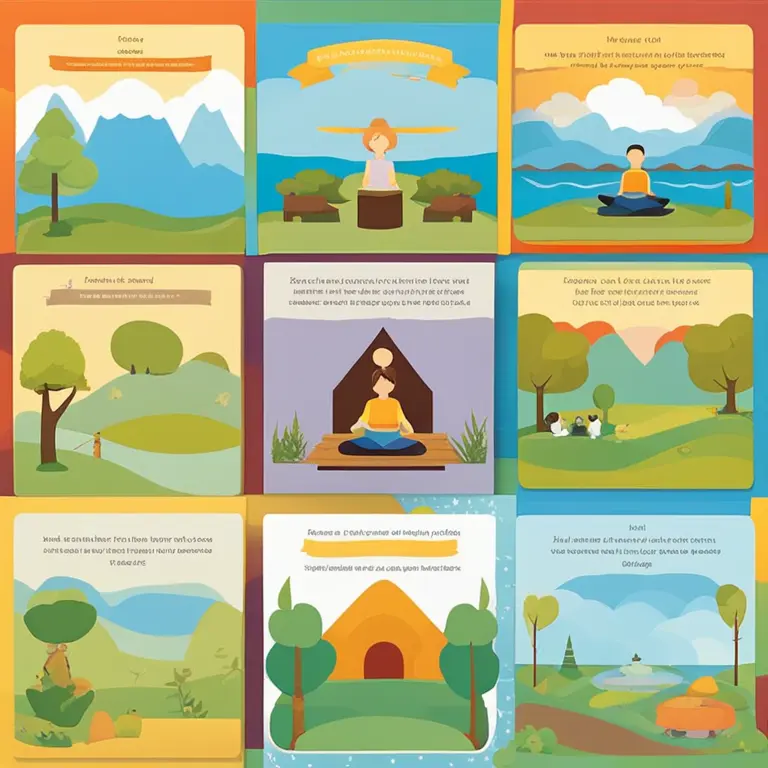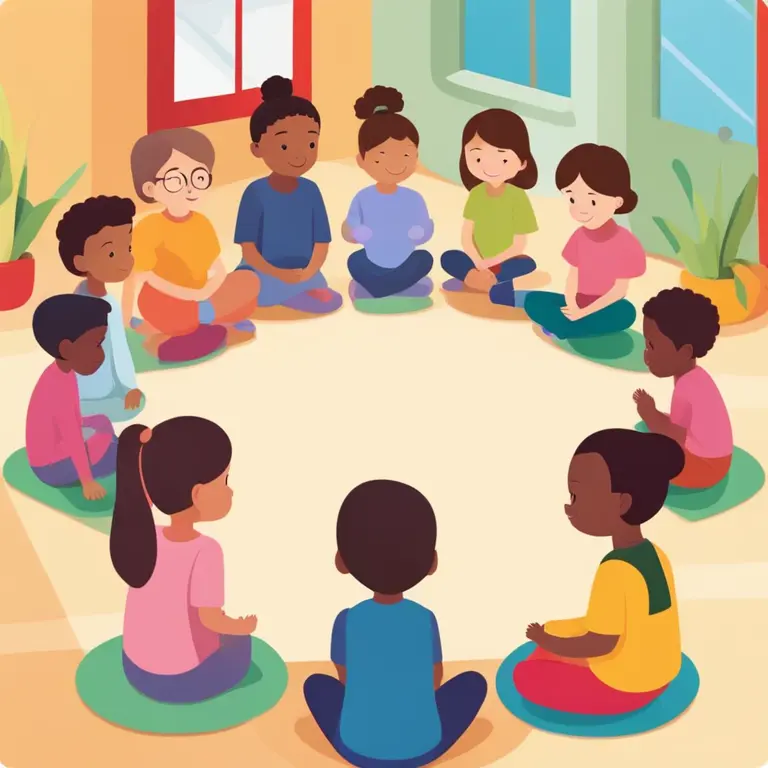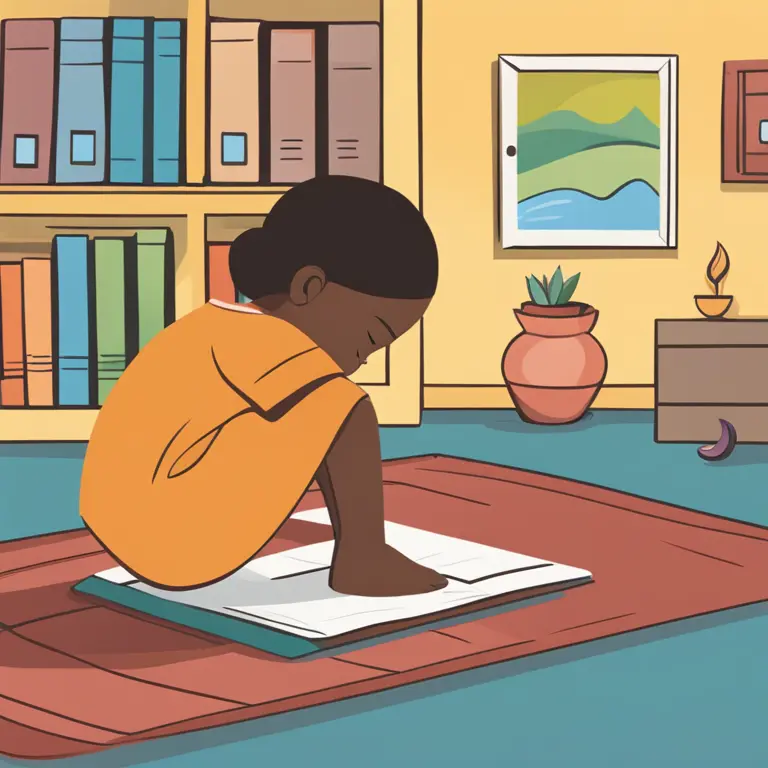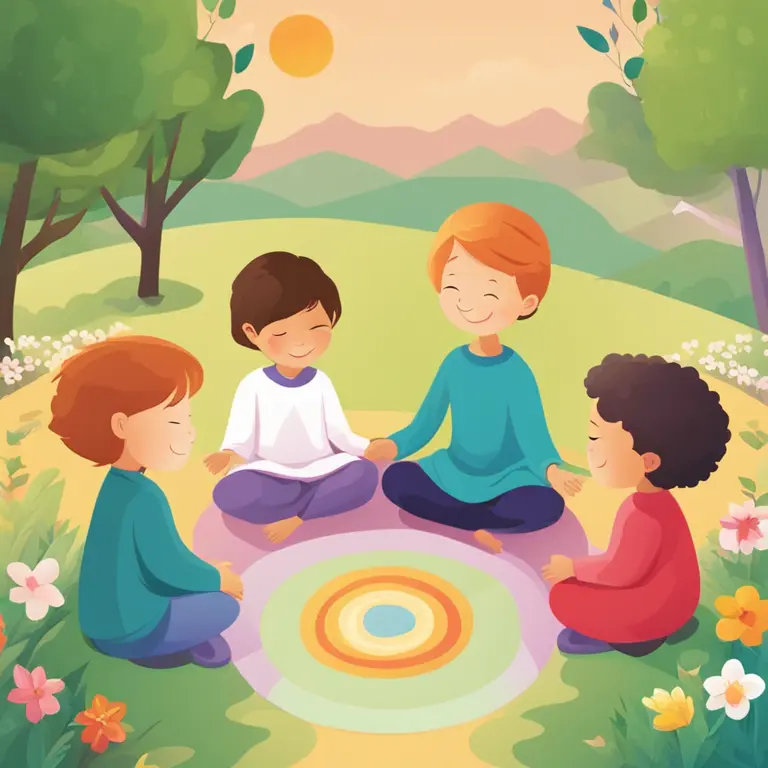
Guiding Little Minds: Mindfulness Meditation for Kindergarteners
Introduce young children to the calming practice of mindfulness with simple meditation techniques designed for kindergartners, fostering a sense of peace and concentration in their formative years.
article by Hina Kurosawa
A Peaceful Start to Lifetime Learning
Meditation has often been an activity associated with adults, yet in recent years, its benefits for children, especially within educational environments, have gained traction. As we look towards a future that values mental well-being, incorporating mindfulness meditation in a kindergarten setting has become not just a trend, but a necessity. Beginning their educational journey with tools for inner peace sets a foundation for lifelong learning and emotional health. These early experiences with meditation can cultivate resilience, enhance focus, and encourage an empathetic perspective towards oneself and others.

Customizing Mindfulness for Young Minds
Mindfulness meditation for kindergarten-age children needs to be tailored to their developmental stage. Engaging young minds requires techniques that are simple, brief, and rich with imagination. A typical session might involve short periods of sitting quietly, listening to the rhythm of their own breath, or visualizing a peaceful scene. Activities such as "Mindful Listening" or "The Belly Breathing Bear" utilize stories and characters to anchor the children’s attention and transform meditation into a playful and relatable practice.

Integrating Mindfulness into the Curriculum
In 2024 and beyond, educational institutions are beginning to acknowledge the importance of fostering emotional intelligence from the start. By integrating mindfulness exercises into the daily curriculum, teachers help students develop a routine that promotes calmness and attentiveness. These moments can also serve as gentle transitions between high-energy play and periods of structured learning, helping children refocus and become present in the moment.

Benefits Beyond the Classroom
The influence of mindfulness meditation extends beyond the walls of the classroom. As children practice these techniques, they learn how to manage their emotions and reactions to the world around them. They can apply these skills during times of stress or conflict, not only at school but also at home and in their future social interactions. The ripple effect can be profound as parents and siblings witness the positive changes and often become interested in practicing mindfulness themselves.

Teacher and Parent Collaboration
For mindfulness meditation to be successful in a kindergarten setting, a collaboration between educators and parents is key. Teachers can provide resources and simple guidelines for parents to follow at home, ensuring consistency and support for the children's mindfulness journey. Regular communication about the practices and progress further reinforces the benefits and encourages a community-wide embrace of these calming techniques.
Future Outlook for Mindful Kindergartens
Looking forward, the integration of mindfulness meditation into early childhood education is poised for growth. As research continues to underscore the positive impact on academic performance, social relationships, and mental health, we can anticipate widespread adoptions of these practices. Kindergartens will become not just places for academic learning but also sanctuaries for emotional regulation and personal development.
Published: 1/18/2024
Modified: 1/18/2024
More predictions
Come back here soon to learn more about yourself and your future


A Short Guide to Mindfulness Meditation
Embark on a journey of self-awareness and tranquility with this comprehensive guide to mindfulness meditation.


Mindfulness Meditation: A Path to Lasting Happiness
Discover how mindfulness meditation can enhance your sense of wellbeing and lead you to a happier life in this insightful article.


The Art of Mindfulness Meditation: A Step-by-Step Guide
Discover the serene journey of mindfulness meditation—learn the art of presence and cultivate a more mindful, peaceful existence.